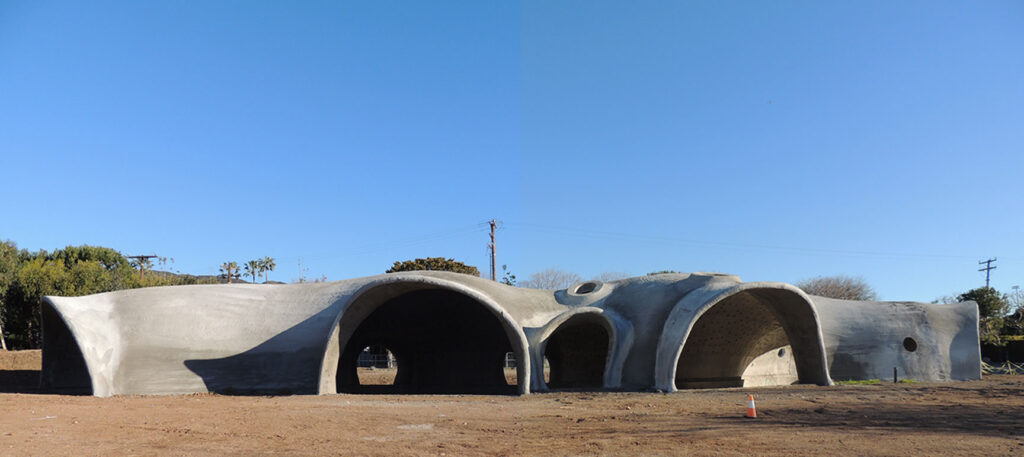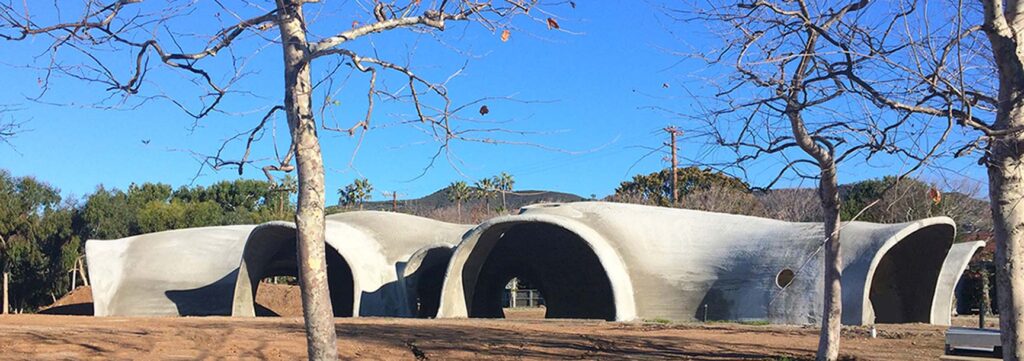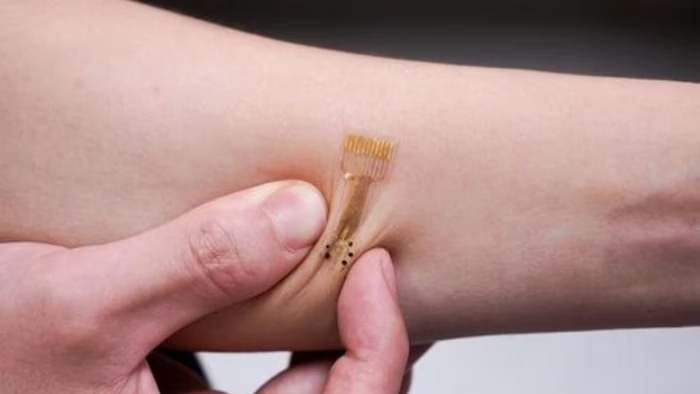From Superinnovators 25/09/23. This article is in TLDR (Too Long Didn’t Read) format which is popular in the innovation community and provides a bullet summary of information.
- Binishells technology overview: Originating in the 60s, Binishells introduces a groundbreaking construction method that involves pouring or spraying concrete over inflatable “pneumoforms”. This technique, refined over decades, allows for the creation of unique, durable, and eco-friendly domed structures, with over 1,600 shells built across 23 countries.
- Building process – inflation: System A, the latest technique, begins with the inflation of a “pneumoform.” Once inflated and pressurised, it is checked to ensure it conforms to architectural drawings.
- Reinforcement and concrete application: Standard steel reinforcement bars (rebar) are added and tied to the inflated form. After inspection and approval, “shotcrete” concrete is applied. This fast application allows for large structures, like a 5,500 square foot shell, to be constructed in just a day.
- Curing and reuse: After the concrete is applied and allowed to cure, the pneumoform is deflated and can be reused 50 to 100 times, minimising waste.
- Versatility: Binishells can be constructed in an infinite variety of shapes and sizes, from large multi-story public structures to small condominiums. The lack of interior bearing structures allows for total flexibility inside, and the exteriors can be designed in almost any shape.
- Safety: Binishells structures are inherently safer than traditional systems in earthquakes due to the even distribution of forces. Their aerodynamic nature also makes them safer in high winds, and their non-combustible nature provides resistance to fires.
- Environmental considerations: Binishells structures are designed to be energy-efficient, with a focus on eliminating thermal bridges, which can lead to significant energy losses. They also require fewer material resources, reducing their environmental impact.









Hello, I have several questions, please:
– do you have complete single family homes plans?
– are you allowed to build your houses in the state of Florida?
Thank you.